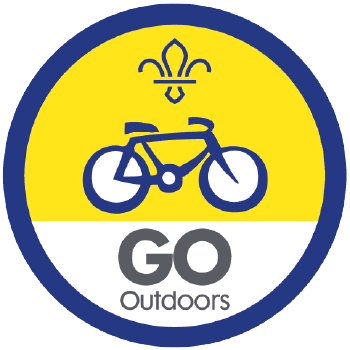Fashion reflective
You’ll need
- A bike (or a large image of a bike)
- helmets of different sizes
- red and white bike lights
- hi-vis vests
- additional safety items such as sashes, snap bands, reflective clothing, spoke reflectors, reflective stickers, cycling gloves, knee and elbow pads
Check the equipment
- Everyone should spread out, facing the person leading the activity.
- The person leading the activity should hold up a safety item. Anyone who knows what the item does, and where it belongs on someone’s body or bike, should put their hand up.
- The person leading the activity should choose someone with their hand up to point at where the item would go on their body or the bike (or the picture of a bike). The person should explain how the item keeps cyclists safe.
- The person leading the game should keep holding up items, so lots of people can have a turn. They should hold up each item more than once, so people can use what they’ve learned to answer
Demonstrate hi-vis
- The person leading the activity should dim the lights (or take everyone outside if it’s dark).
- One or two people should shine torches at the hi-vis items.
- Everyone should look and see how the items reflect the light.
- Everyone should think about when hi-vis helps people to be seen. It’s not just for cyclists, others such as walkers, horse riders, and police officers wear hi-vis. It’s also useful in early morning, when it’s raining or foggy, or in busy places.
- The person leading the activity should remind everyone of the saying ‘be safe, be seen’ to help them remember why it’s important to wear and use the correct equipment while cycling.
Hold a fashion show
- The person leading the game should put a selection of clothing and safety items in a pile.
- Everyone should split into groups of between three and six people. Each group should choose one person to be their model.
- Each group should choose clothes and items from the pile. They should choose items that help people cycle safely.
- Each group should dress their model. The model should put any clothing on over their own – there’s no need to change.
- The person leading the activity should set up a fashion show with a catwalk. They could set up a song (for example, a bicycle themed pop song), or even some lights.
- The models should take it in turns to walk down the catwalk while the rest of their team tells everyone what their model’s wearing, why they chose those items, and how the items keep the model safe. The model should show off all their safety items as they walk.
Check the helmets
- As the models reach the end of the catwalk (or perhaps after the show has finished), the other groups should check each model’s helmet is correctly fitted. It should land above the eyebrows, form a V, buckle up, and fit firmly.
- Everyone who wants to should take turns trying on the helmets. Everyone should help make sure they fit correctly.
- Everyone should get into a circle. They should all think about other ways to stay safe while cycling.
Reflection
This activity was a chance for everyone to develop the skills they need to be safe while being active. It’s important to look after ourselves while cycling, and a variety of safety items are better than just one. Why do people think it’s important to use more than way to be seen in low light conditions? What about in the daytime – why is it a good idea to wear hi-vis or bright clothing then? Everyone should try to remember all of the items they used in ‘check the equipment’. What should or shouldn’t people wear?
Everyone should feel their heads. They should think about what’s inside that needs protecting. The brain is the engine house of the whole body; it’s protected by a hard, bony skull, but heads need extra protection and a helmet is the best way to do that. Can anyone name another activity that needs a helmet? Some examples of activities people may do at home include scooting, skating, or skateboarding.
Safety
All activities must be safely managed. You must complete a thorough risk assessment and take appropriate steps to reduce risk. Use the safety checklist to help you plan and risk assess your activity. Always get approval for the activity, and have suitable supervision and an InTouch process.
- Dark
Provide some light, so the environment isn’t completely dark. Everyone must be able to see others and move around the area safely.
You could add some incorrect items and see if anyone can pick them out. Why not try dark clothes, caps, long skirts, baggy trousers, a torch, or a damaged helmet (for example, with a broken buckle)? People should try to explain why you shouldn’t wear or use these items while cycling. They may already know that dark clothes make it harder to be seen, hats and caps stop helmets fitting properly (and offer no protection), long or baggy clothing could get tangled in wheels, torches aren’t hands free, and damaged helmets don’t offer proper protection.
You could invite someone from your local cycling club, or a parent or carer who cycles, to talk about how they dress and cycle safely.
Anyone who feels uncomfortable in low light could hold a torch or lamp, or sit near an adult. Be sensitive if anyone has a visual impairment, and adapt activities for them. Sikhs who wear a turban don’t have to wear a cycle helmet when riding a bike; this is the only exception.
All Scout activities should be inclusive and accessible.
